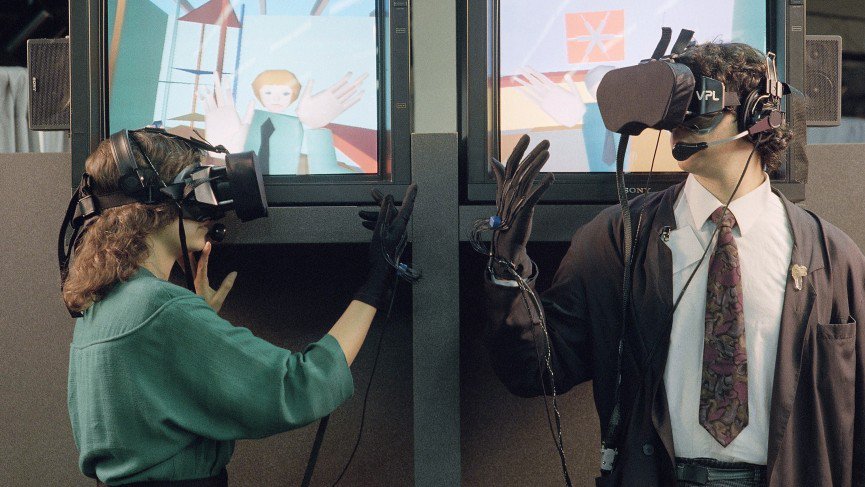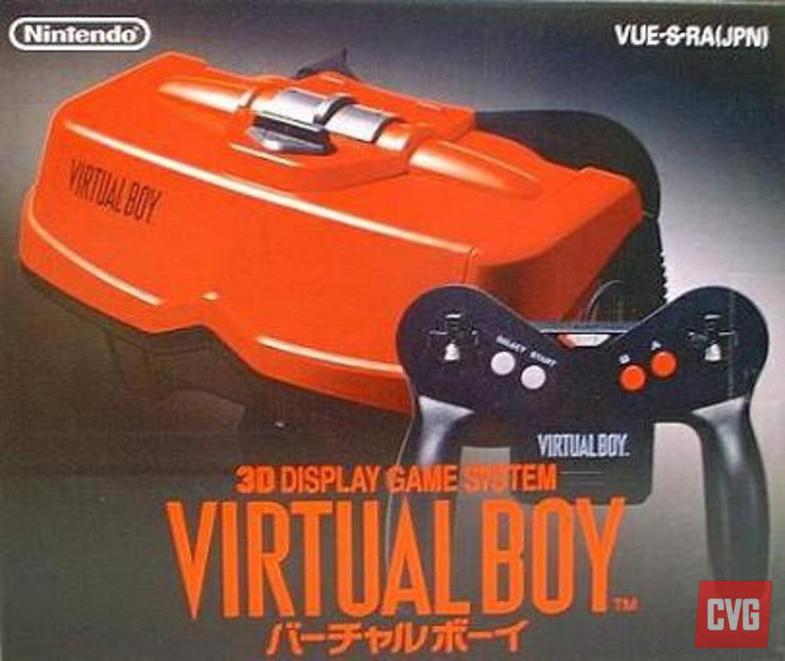What was the virtual reality of the 1990s
Virtual reality helmets allow you to get into the fantasy world of game developers, heal mental diseases, train surgeons and astronauts. But for most people, virtual reality is above all a game with full immersion, which, nevertheless, is still far from perfect.
How far have we got from projects from the 1990s? Let's see how virtual reality looked a quarter of a century ago.

Shot from the movie "Johnny Mnemonic"
Brief history of virtual reality helmets
First attempts
The history of helmets of virtual reality began the system Sensorama from 1956. It is more correct to call this system not even a helmet, but an apparatus or a virtual reality cabin. And more precisely - the first 5D cinema. The device not only showed short 3D films: the device's seat vibrated, and the system generated smells to impart more realism.
Interview with Morton Heilig, who patented Sensorama, and filming the device from different angles .

Sensorama and the process of creating videos for the device
For the full immersion, the Sensorama “helmet” lacked tracking of the user's head movements. In 1961, the opportunity was studied by the American military. The project was called Headsight. The system consisted of magnetic sensors for tracking the user's head position, a video helmet with a display, and broadcast cameras. The point was to create a device for remote study of any places where you can not personally go. For example, so could study Mars .

Shot from the movie "Exposing". Always maintains information about the Philco Headsight project.
NASA in 1985 worked on the Virtual Environment Display System - a helmet that looks like modern. He had a LCD-display, LEDs, tracked the position of the head.

First commercially available systems
Until 1984, all such projects remained at the development stage, inaccessible to the mass user. The first on sale appeared system RB2. Because of its value, it was doomed to failure. The basic version cost $ 50,000. The translation in today's money is 118 thousand dollars. The standard version would cost twice as much.

Virtual reality system RB2
Their game versions of helmets were presented by Sega for Genesis and Nintendo as a separate 3D game system Virtual Boy. If the helmet from Sega did not go beyond the concept, then the Nintendo Virtual Boy was sold for a while. But because of the pain in the neck of the popularity of the players he has not received.
Virtual Boy Gameplay - Mario Clash Game

Nintendo Virtual Boy of 1994 showed a black and red image using two monochrome displays
First of all, the systems were needed as rides in gaming halls. But already in the 1990s there were other ways to use them — for example, for holding conferences and inspecting buildings that were not yet constructed.
Virtual Reality of the 1990s
Superscape Virtual Realities
In 1991, the developers of Superscape Virtual Realities released an interactive demonstration of their capabilities. Emulation is available by reference .
Five years later, the company introduced a tool for VR application developers. In the description of the video they write that in those years it was one of the most popular tools of this kind.
Xerox PARC
In the early 1990s, Rich Gossweiler and Randy Pausch were virtualized with virtual reality .
In 1997, Gossweiler, who worked at that time in Xerox PARC, introduced the CosmoWorld system. Gosweiler worked with various similar projects at the Hewlett-Packard, IBM Almaden Research Center and Nasa.
Virtuality group
In the early 1990s, the Virtuality Group developed a virtual reality system. The company offered a system that allowed, with a minimum delay - up to 50 milliseconds - to play in virtual reality with the help of stereoscopic glasses, joysticks and stylized, for example, car seats. The Virtuality Group has also developed gloves to control movement in the game. The system provided for the fights of several players on the network. Among the games were robot fights and air battles.
There were two types of devices - those in which the player stood, and sedentary options. In both cases, used virtual reality helmets "Visette". The helmets were equipped with two LCD screens with a resolution of 276x372 pixels, four speakers, a microphone and a magnetic head position tracking system.

A page from the magazine advertising the arcades of Virtuality. Wikipedia
Control for standing players was carried out using a joystick — it also had a position tracking system to transmit the virtual hand to the system. Devices in which the player was sitting, had a steering wheel or aircraft steering wheel, depending on the game.
The Virtuality 1000CS system worked on the Commodore Amiga 3000 computer. Subsequent models used the Intel 486-PC and Motorola 88110 processor.
A very interesting example is the Dactyl Nightmare game in which you could smash an opponent into pieces with a pistol shot. Unless, however, they have fallen into the hands of a terrible pterodactyl that flies over all the players.
In the video below - the gameplay of the game Legend Quest.
The 1991 Grid Busters game was a robots gladiator battle.

In this video in 1994, they talk about the creation of arcade machines with virtual reality based on the SU 2000 system from Virtuality, 1000CS developers. You can see the process of creating characters and gameplay.
Thanks to the Virtuality, virtual reality systems have found the way not only to gaming halls, but also to consumers' homes. After the sale of the company in parts, its founder in 1998 launched, in conjunction with Philips Electronics, the Scuba device at a price of $ 299. It sold more than 55,000 copies, mostly in Japan.

Spheres of application
Among the applications of virtual reality are entertainment, education, treatment of mental illness and phobias, telepresence. Already in 1993, researchers worked on applications that allow conferences in a virtual environment. One such system was the Distributed Interactive Virtual Environment (DIVE).
In 1995, the company Virtuality developed by order of IBM Elysium system for architects, builders and their clients. Virtual reality helped to see what would be the result of the work.

And, of course, such a system can be used instead of anesthesia in the dentist’s office. Why I have never seen Oculus Rift there is not clear.
Results
Has virtual reality gone far? First, the cost of the devices themselves has noticeably decreased. Thanks to solutions using smartphones, you can cut glasses out of cardboard yourself, while even such a system is able to track the movement of the user's head. Secondly, the graphics today are much better compared to the 1990s. But the control remains the same - joysticks and tracking the movement of the user's head.
Have you already bought an Oculus Rift?
